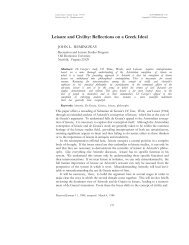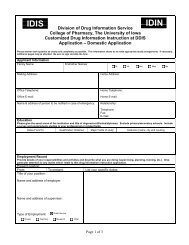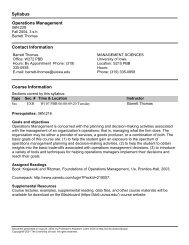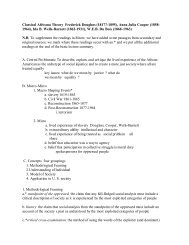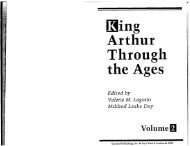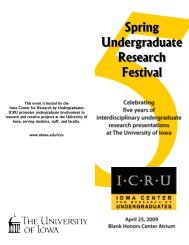Twenty-Five Years of Batson: An Introduction to ... - University of Iowa
Twenty-Five Years of Batson: An Introduction to ... - University of Iowa
Twenty-Five Years of Batson: An Introduction to ... - University of Iowa
Create successful ePaper yourself
Turn your PDF publications into a flip-book with our unique Google optimized e-Paper software.
2012] TWENTY-FIVE YEARS OF BATSON 1411<br />
arguments” supporting the prohibition <strong>of</strong> women jurors. 153 Moreover, the<br />
State had furnished “virtually no support for the conclusion that gender<br />
alone” accurately predicts juror attitudes and was wrong “<strong>to</strong> assume that<br />
gross generalizations” rooted in gender were any more permissible than<br />
those grounded in race. 154 Consequently, every person had a right against<br />
summary exclusion from jury service “because <strong>of</strong> discrimina<strong>to</strong>ry and<br />
stereotypical presumptions that reflect and reinforce patterns <strong>of</strong> his<strong>to</strong>rical<br />
discrimination.” 155<br />
J.E.B. addressed the border <strong>of</strong> <strong>Batson</strong>’s terri<strong>to</strong>ry, indicating that few, if<br />
any, other types <strong>of</strong> discrimination were regulated. While neither race nor<br />
gender may “serve as a proxy for bias,” a party may peremp<strong>to</strong>rily remove<br />
“any group or class <strong>of</strong> individuals normally subject <strong>to</strong> ‘rational basis’<br />
review.” 156 <strong>An</strong> equal protection challenge is possible only when peremp<strong>to</strong>ries<br />
target groups accorded higher-than-rational-basis equal protection<br />
scrutiny. 157<br />
In sum, in four significant decisions during <strong>Batson</strong>’s first decade, the<br />
Court expanded its reach. Defendants may raise claims based on the<br />
removal <strong>of</strong> jurors <strong>of</strong> a different race, neither civil parties nor criminal<br />
defendants may strike jurors based on race, and parties may not strike jurors<br />
based on gender. Having broadened its realm substantially, the Court then<br />
announced that the era <strong>of</strong> expansion was nearing—or was at—an end.<br />
B. REFINING BATSON’S DOCTRINE<br />
A few post-<strong>Batson</strong> decisions have refined the doctrinal framework<br />
prescribed for evaluating equal protection claims. As discussed above, <strong>Batson</strong><br />
established three steps. First, the opponent <strong>of</strong> peremp<strong>to</strong>ry challenges must<br />
establish a prima facie case <strong>of</strong> purposeful discrimination. If a sufficient<br />
showing is made, step two requires the party exercising the contested<br />
153. Id. at 138.<br />
154. Id. at 138–40.<br />
155. Id. at 141–42. The Court noted that gender-based strikes inflict the same sorts <strong>of</strong><br />
harms that motivated <strong>Batson</strong> and “ratify and reinforce prejudicial views <strong>of</strong> the relative abilities <strong>of</strong><br />
men and women.” Id. at 140.<br />
156. Id. at 143.<br />
157. In general, the only other classifications that currently qualify for higher equal<br />
protection scrutiny are religion, see Larson v. Valente, 456 U.S. 228, 246 (1982); national<br />
origin, see Oyama v. California, 332 U.S. 633, 646 (1948); alienage, see Graham v. Richardson,<br />
403 U.S. 365, 376 (1971); and illegitimacy, see Clark v. Jeter, 486 U.S. 456, 465 (1988). In<br />
light <strong>of</strong> the unique his<strong>to</strong>ries <strong>of</strong> race and sex discrimination in jury selection, the majority<br />
suggested that <strong>Batson</strong>’s framework might apply only <strong>to</strong> strikes based on “race or gender.” See<br />
J.E.B., 511 U.S. at 142 n.14 (stating that “peremp<strong>to</strong>ry challenges . . . on the basis <strong>of</strong> group<br />
characteristics other than race or gender . . . do not reinforce the same stereotypes about the<br />
group’s competence or predispositions that have been used <strong>to</strong> prevent them from voting,<br />
participating on juries, pursuing their chosen pr<strong>of</strong>essions, or otherwise contributing <strong>to</strong> civic<br />
life”).





